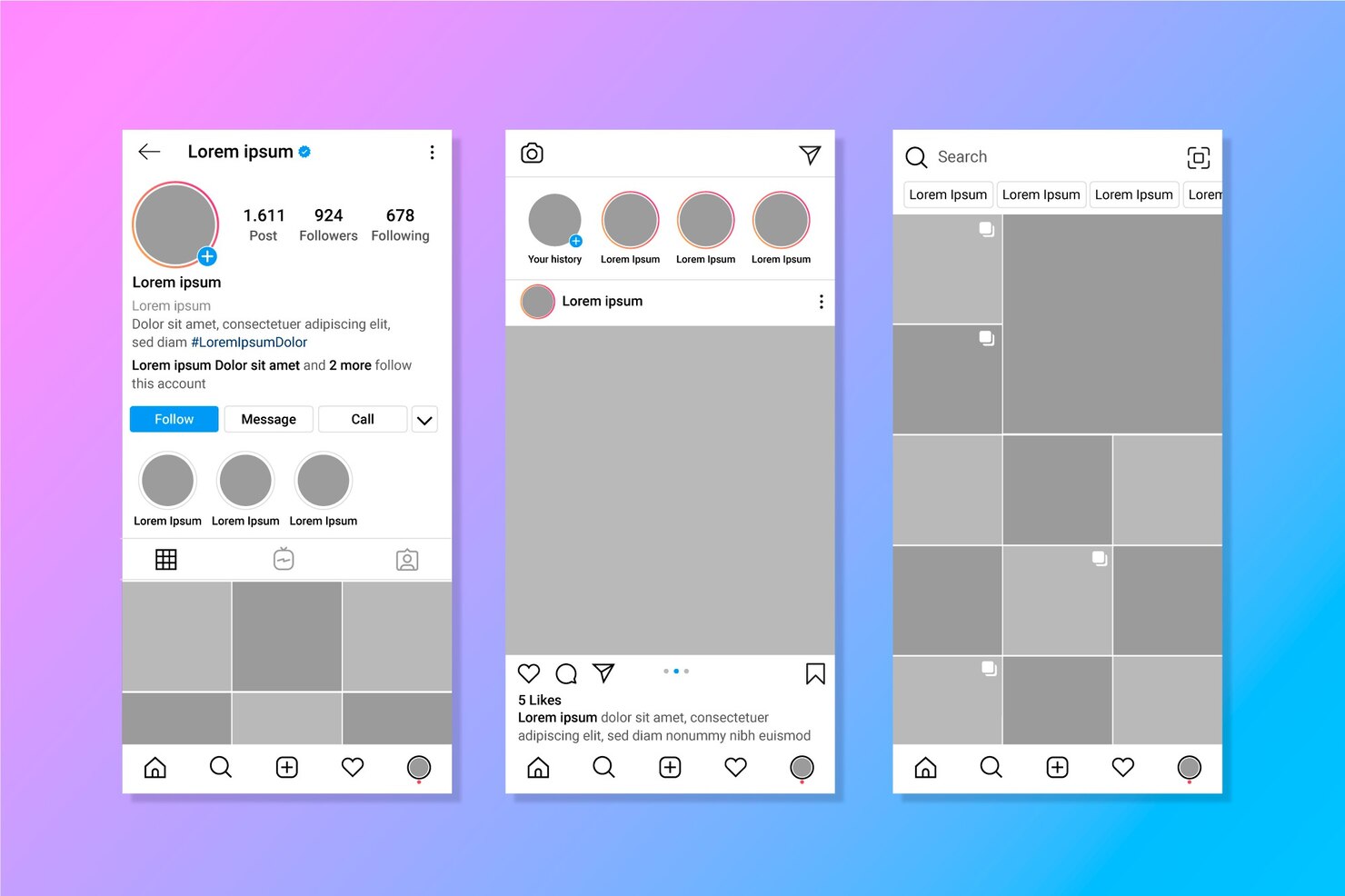2. Write Keyword-Rich Captions
Captions aren’t just an afterthought but essential for Instagram SEO and user engagement. Follow these guidelines:
- Tell a Story: Captions that share insights, experiences, or tips resonate more deeply with audiences. For example, a skincare brand might share “5 Tips for Glowing Skin This Winter.”
- Incorporate Keywords Naturally: Use relevant keywords to describe your content while keeping the tone conversational.
- Add Calls-to-Action (CTAs): Encourage your audience to engage by including CTAs like “Double-tap if you agree,” “Share this with a friend,” or “What’s your favorite product?”
- Include Emojis: Emojis add personality and can visually emphasize key points in your caption.
Example: “Struggling with meal prep ideas? Here are 5 quick and healthy recipes to fuel your week! Drop your go-to meal prep tip below! #HealthyEating #MealPrepMadeEasy”
3. Use Strategic Hashtags
Hashtags are Instagram’s version of keywords, helping users discover content relevant to their interests. Here’s how to use them effectively:
- Focus on Niche and Branded Hashtags: Use targeted hashtags like #StrengthTrainingTips instead of overly broad ones like #Fitness. Niche hashtags attract a more engaged audience.
- Limit Hashtag Usage: Stick to 3–5 hashtags per post for optimal performance. Overloading your captions with hashtags can appear spammy and reduce engagement.
- Research Trending Hashtags: Tools like Hashtagify and RiteTag can help identify trending or low-competition hashtags relevant to your niche.
- Avoid Banned Hashtags: Using banned hashtags can result in reduced visibility or a “shadowban,” which limits your content’s reach.
Pro Tip: Rotate hashtags across posts to avoid redundancy and increase reach to different audiences.
4. Add Location Tags
Location tags improve local discoverability, making them especially valuable for businesses targeting nearby audiences. Here’s how to use them:
- Tag Locations in Posts and Stories: Add city, neighborhood, or venue tags to your content. For example, a local bakery might use “Phoenix, AZ” or “Old Town Scottsdale.”
- Leverage Specific Locations: Tagging popular landmarks, local businesses, or event venues can expand visibility among geographically relevant users.
Example: A restaurant could post a photo with “ Downtown Phoenix” to attract locals searching for dining options.
5. Boost Engagement
High engagement signals are relevant to Instagram’s algorithm, increasing your visibility in feeds and search results. Try these techniques:
- Run Giveaways: Encourage followers to like, share, or tag friends to enter contests, boosting interaction naturally.
- Ask Questions: Pose open-ended questions in captions to spark meaningful conversations. For example, “What’s your favorite weekend getaway spot?”
- Use Polls and Quizzes: Stories offer features like polls, quizzes, and sliders to increase interaction and gather audience insights.
- Collaborate with Influencers: Partner with influencers to quickly tap into their established audiences and build trust.
6. Write Custom Alt Text for Posts
Instagram’s alt text feature enhances accessibility and helps with SEO by describing your images to users and the algorithm.
- Be Descriptive and Specific: Write clear, keyword-rich descriptions. For example: “A cozy coffee shop in downtown Seattle with rustic decor and a steaming cappuccino on the table.”
- Use Relevant Keywords: Incorporate primary keywords naturally into the alt text for better discoverability.
7. Be Authentic and Consistent
Authenticity and consistency are key to building trust, recognition, and loyalty among your followers.
- Post Regularly: Create a content calendar to maintain a consistent posting schedule (e.g., 3-4 posts per week).
- Stay True to Your Brand Voice: Whether playful, professional, or inspirational, keep your tone consistent.
- Show Behind-the-Scenes Content: Followers appreciate transparency—share your process, daily routines, or team highlights.
Pro Tip: Use Instagram Stories and Reels to showcase your personality in a more casual, real-time way.
8. Leverage Analytics Tools
Understanding what works is essential for optimization. Use Instagram’s native analytics or third-party tools to measure performance:
- Track Engagement Metrics: Monitor likes, shares, saves, and comments to identify your top-performing content.
- Identify Trending Hashtags: Tools like Content Studio’s Hashtag Generator can help uncover hashtags driving the most visibility.
- Generate Caption Ideas: Use tools like Coschedule’s Headline Studio to craft engaging, keyword-optimized captions.
Pro Tip: Regularly analyze your data to refine your content strategy, focusing on what resonates with your audience.
9. Experiment with UGC and Influencers
User-generated content (UGC) and influencer collaborations can significantly enhance credibility and expand your reach.
- Encourage UGC: Ask followers to share content featuring your products or services and repost it to your feed. For example, “Tag us in your photos for a chance to be featured!”
- Partner with Influencers: Collaborate with micro or macro influencers aligned with your brand. Their audience trust helps amplify your visibility and drive engagement.
- Create Branded Campaigns: Launch campaigns encouraging followers to use branded hashtags or participate in challenges.
Example: A fitness brand might run a challenge using #30DayWorkout to inspire user participation and expand visibility organically.
You can optimize your profile and content for search, engagement, and growth by incorporating these nine actionable steps into your Instagram strategy. Instagram SEO is an ongoing process, but with a well-rounded approach, you’ll connect with targeted audiences, boost discoverability, and see measurable results over time.
FAQs About Instagram SEO
How does Instagram SEO work?
By optimizing keywords in captions, hashtags, alt text, and bios, your content becomes more discoverable. Engagement further boosts visibility, creating a positive feedback loop.
Do Instagram captions help with SEO?
Yes! Captions help to improve your content rankings. Use them to include keywords and engage your audience naturally.
Can hashtags improve Instagram SEO?
Absolutely. Hashtags function like keywords, helping users find your content through search.
How do I add SEO to Instagram Reels?
Optimize Reels by adding relevant keywords to captions, titles, and cover images, and use a mix of niche-specific and branded hashtags.








